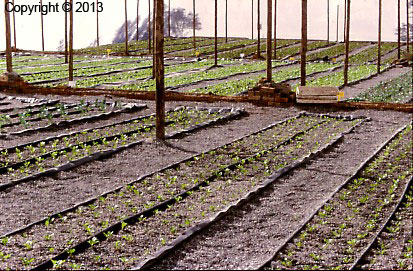Closed hydroponic systems – the basics
Over the years, closed hydroponic systems have been criticized quite often for their high initial capital cost and the perception that these systems have a high disease risk. During the initial development of the closed system in 1961, these criticisms might have been true since little scientific knowledge was available. Since 1961 an enormous amount of work has been done in order to provide farmers with answers how to combat the various problems associated with these systems.
The fact that closed hydroponic systems are expensive to install is true. Not only is it expensive but difficult too. Slight deviations on the channels can result in serious losses in plant growth and quality. Compound these losses over the life of the system and the amounts can be quite substantial. That is why it is recommended that a professional company is used. Advances in technology and research have found many answers to the disease pressures found in these systems. These technologies range from mechanical such as UV radiation and ozone treatments to chemical advances.
In Europe there has been a slow change from open hydroponic systems using Rockwool® as growth medium to closed systems such as the pure nutrient film technique (NFT) as developed by Dr. Allan Cooper in 1961) and the gravel flow technique (GFT) as is used most commonly in South Africa. The Netherlands have a law has been enforced that all systems installed after 2001 should be of the closed type. No effluent is allowed to reach any underground or above ground water. The reason for the change is the extreme damage that open systems cause to the environment and the losses found in not re-circulating the effluent water which is nutrient rich. The basic components of a gravel flow (GF) system consist of:
- One nutrient tank
- One or two catchment tanks
- Plastic gullies (also called channels)
- Effluent pipes running from gullies to catchment tanks
- Nutrient pipes running from the nutrient tank to the top of the gullies

The number of tanks, length and number of gullies, the number of gullies feeding into the tanks will all depend on the space available for the hydroponic system as well as the size of the farm. It is possible to have 1ha hydroponic system using only one pump and nutrient tank. The disadvantage is that only one to two crops can be grown which should have the same nutrient requirements. Installing additional tanks requires additional pumps and fittings. The tanks are not expensive but the pumps are. They are also expensive to run. In terms of economics it is more advisable to install only one pump, but on the long term and for more flexibility the more pumps and separate nutrients tank the better. However the farm must still make economic sense.
Compare to open hydroponic systems.



